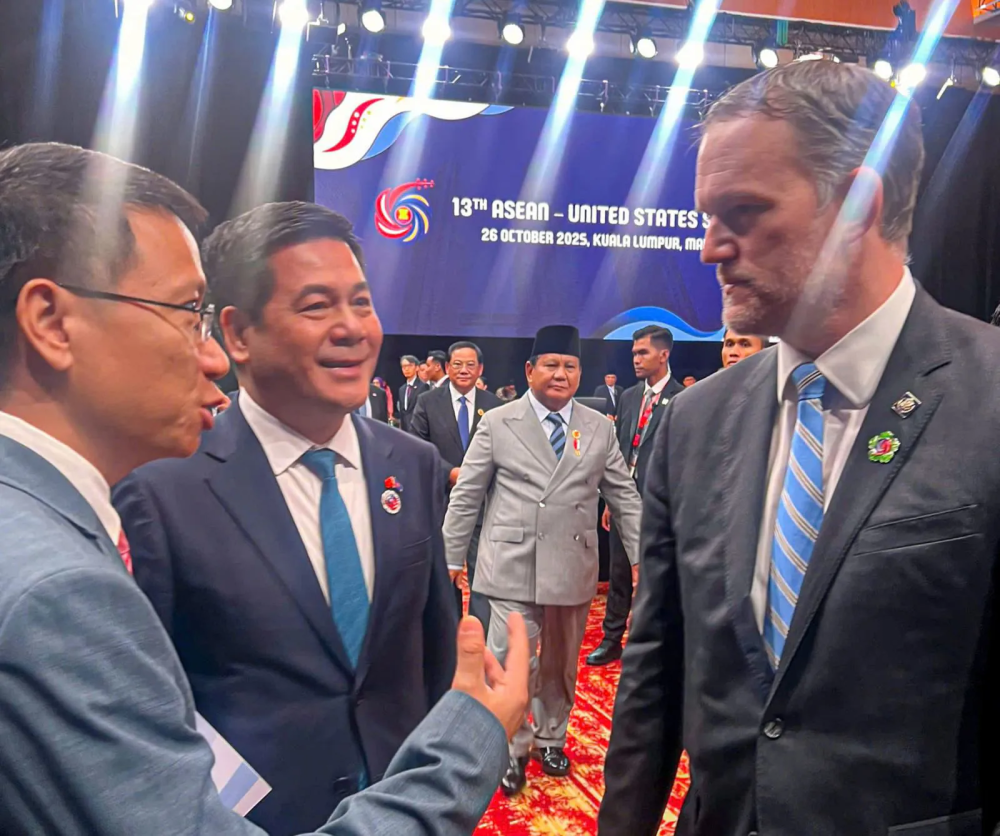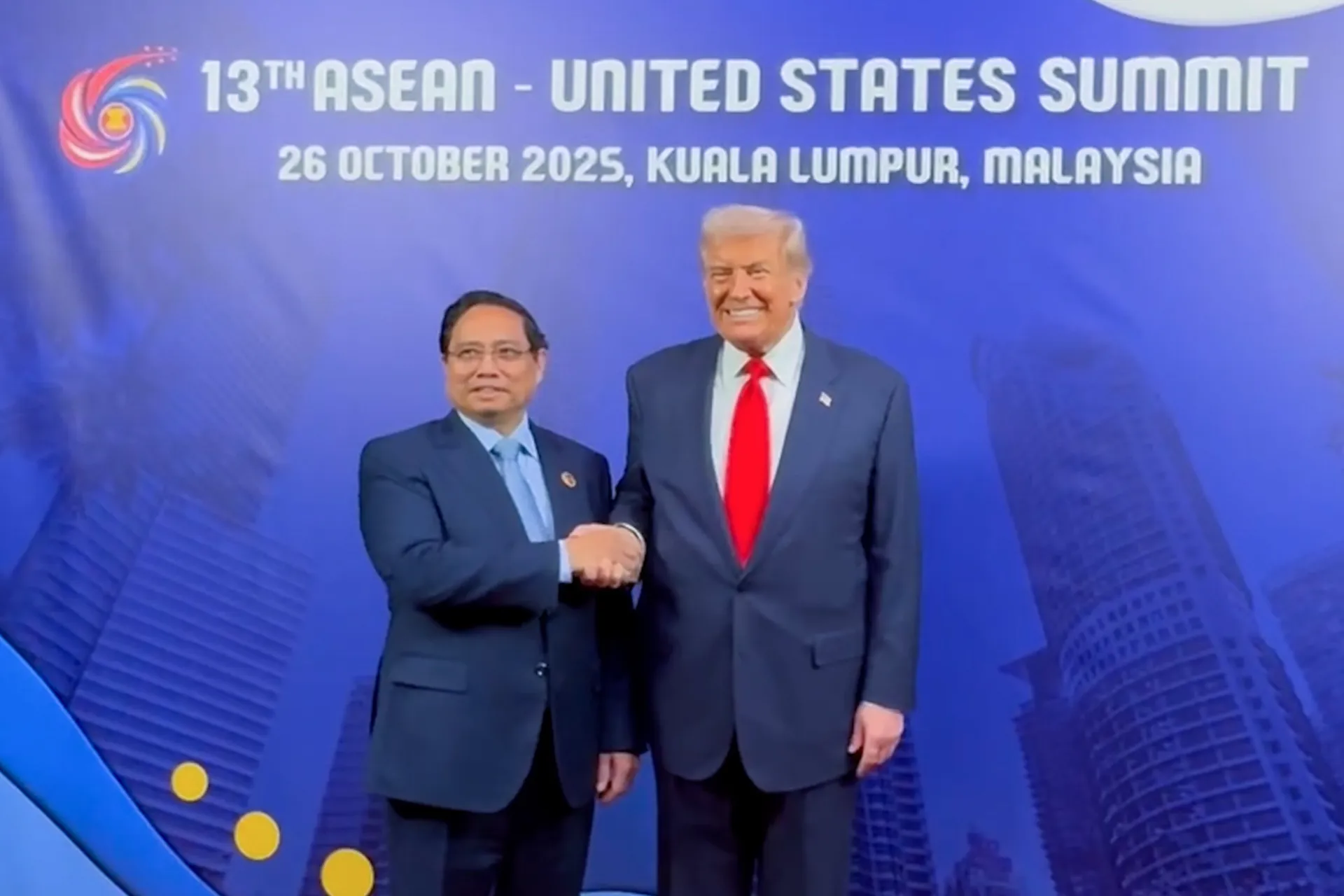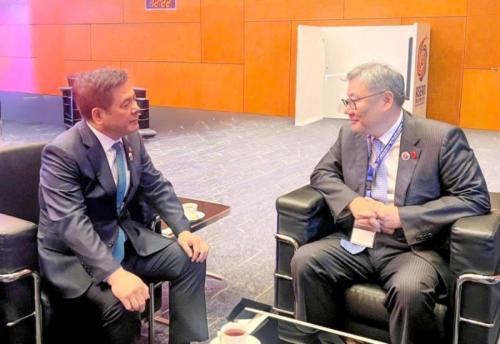Vietnam-US reciprocal trade agreement provides unprecedented access to each other’s markets
Vietnam will grant preferential market access to nearly all US industrial and agricultural exports, while the US will maintain a 20% reciprocal tariff on Vietnamese goods and apply a zero tariff to selected items.
THE HANOI TIMES —A Framework for an Agreement on Reciprocal, Fair and Balanced Trade between Vietnam and the US will provide both countries’ exporters unprecedented access to each other’s markets, according to the Joint Statement released today [October 26].
The Agreement on Reciprocal, Fair and Balanced Trade will build upon the longstanding economic relationship, including the US-Vietnam Bilateral Trade Agreement signed in 2000 that entered into force in 2001.
According to the joint statement of the agreement, Vietnam will provide “preferential market access for substantially all US industrial and agricultural exports” to Vietnam.
Meanwhile, the US will maintain at 20% the reciprocal tariffs, as outlined in Executive Order 14257 of April 2, 2025, as amended, on originating goods of Vietnam, and will also identify products from the list set out in Annex III to Executive Order 14346 of September 5, 2025, Potential Tariff Adjustments for Aligned Partners, to receive a zero percent reciprocal tariff rate.
The two countries will work constructively in an effort to address both countries’ interests in non-tariff barriers that affect bilateral trade in priority areas.
Vietnam has agreed to address many such barriers including, for example, by accepting vehicles built to US motor vehicle safety and emissions standards; addressing import licenses for US medical devices; streamlining regulatory requirements and approvals for US pharmaceutical products; fully implementing Vietnam’s obligations under certain international intellectual property treaties to which it is a Party; and addressing US concerns with conformity assessment procedures.
Vietnam will facilitate the export of US agricultural products in the Vietnamese market, including about US regulatory oversight and acceptance of the currently agreed certificates issued by US regulatory authorities.
The two countries will finalize commitments on digital trade, services and investment
They will engage to address intellectual property, labor, environment, customs and trade facilitation, good regulatory practices and any distortionary behaviors of state-owned enterprises.
Both sides are committed to strengthening cooperation towards shared goals to enhance supply chain resilience, including addressing duty evasion and cooperating on export controls.
In addition, the two countries take note of recent commercial deals between US and Vietnamese companies in the areas of agriculture, aerospace and energy.
Vietnam Airlines has agreed to purchase 50 aircraft from Boeing, which is worth over $8 billion.
Additionally, Vietnamese companies have signed twenty memorandums of understanding with US companies to purchase US agricultural commodities, with a total estimated value of over $2.9 billion.
In the coming weeks, the US and Viet Nam will work to finalize the Agreement on Reciprocal, Fair and Balanced Trade, prepare the Agreement for signature and undertake domestic formalities in advance of the Agreement entering into force.

Prime Minister Pham Minh Chinh meets President Donald Trump
On October 26, on the sidelines of the 47th ASEAN Summit in Kuala Lumpur, Malaysia, Vietnamese Prime Minister Pham Minh Chinh held a brief meeting with US President Donald Trump during the ASEAN–US Summit.
The prime minister conveyed an invitation from General Secretary To Lam and Vietnam’s senior leaders for President Trump to visit Vietnam, which the president gladly accepted.
The two sides also discussed arrangements for General Secretary To Lam’s visit to the US, while President Trump expressed his wish for Prime Minister Chinh to visit the US at a mutually convenient time.
Both leaders agreed to advance substantively the Comprehensive Strategic Partnership for peace, cooperation and sustainable development. They also agreed to expedite the signing of a reciprocal, fair and balanced trade agreement to promote greater US investment in Vietnam.
Chinh proposed that the US soon recognize Vietnam as a market economy and remove the country from the D1 and D3 strategic export control lists [categories that currently limit access to certain technologies and high-value goods for national security and chemical or biological risk reasons].
President Trump welcomed the proposal and instructed relevant US officials to work with their Vietnamese counterparts to move the process forward.
On the same day, Vietnamese Minister of Industry and Trade Nguyen Hong Dien met with US Trade Representative Chief Jamieson Greer and Deputy Secretary of State Jacob Helberg to discuss cooperation in trade, digital technology, artificial intelligence, supply chain partnerships and the possibility of signing a memorandum of understanding in these areas.
Efforts for reciprocal trade agreement
Since late April 2025, Vietnam and the US have held multiple rounds of reciprocal trade negotiations at both technical and ministerial levels.
The Vietnamese government delegation was led by Minister of Industry and Trade Nguyen Hong Dien, with members from the Ministries and agencies of Industry and Trade, Foreign Affairs, Public Security, Finance, Justice, Agriculture and Environment, Science and Technology, Home Affairs, Construction, Health, the State Bank of Vietnam, and the Vietnamese Embassy in the US.
Several in-person and online negotiation sessions took place between Minister Nguyen Hong Dien and US Trade Representative Jamieson Greer, as well as US Secretary of Commerce Howard Lutnick.
On August 1, the White House published a Presidential Executive Order by President Donald Trump on the adjustment of reciprocal tariffs. Under the order, the US revised tariff rates for 69 countries and territories listed in Annex I, reducing the rate for Vietnam from 46% to 20%.
According to Vietnam Customs, in the first nine months of 2025, the two-way trade reached approximately $126.4 billion.
Source: Linh Pham
Photo: VGP





